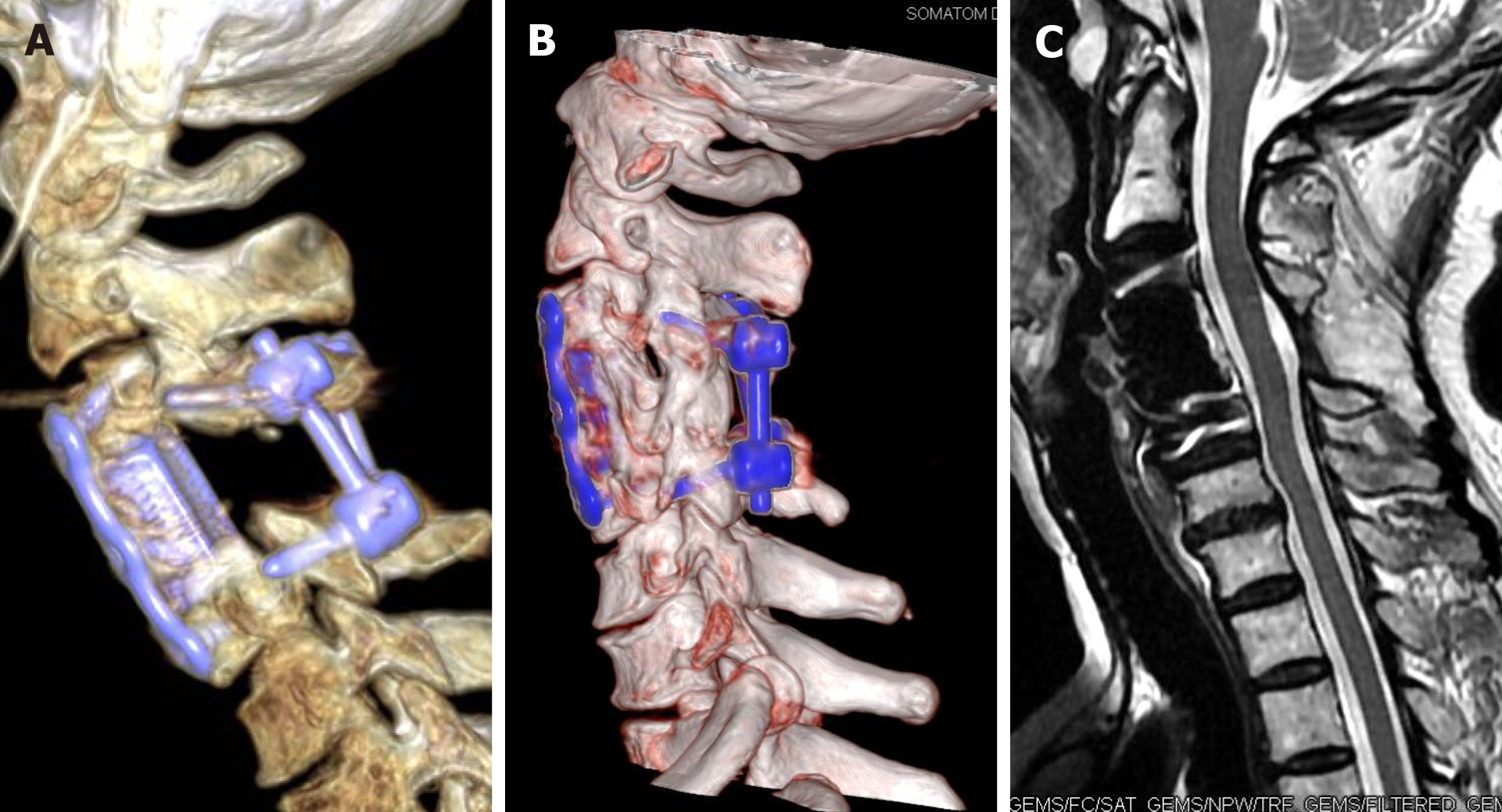Copyright
©The Author(s) 2021.
World J Clin Cases. Jan 26, 2021; 9(3): 644-650
Published online Jan 26, 2021. doi: 10.12998/wjcc.v9.i3.644
Published online Jan 26, 2021. doi: 10.12998/wjcc.v9.i3.644
Figure 1 Imaging changes of C4 vertebra before treatment.
A: Sagittal computed tomography (CT) showed the metastasis at the C4 vertebral body and cervical kyphosis; B: The coronal CT showed the right vertebral artery (VA) was compressed by the tumor; C: Sagittal magnetic resonance imaging (MRI) showed the lesion protruded into the spinal canal and caused spinal cord compression at the C4 segment; D: Coronal MRI showed the lesion caused spinal cord and right VA compression; E: The three-dimensional printed model shows here the location and extent of the tumor.
Figure 2 Imaging changes of cervical spine after operation.
A: Computed tomography (CT) reconstruction at 1 wk after operation showed the total C4 vertebra was removed and cervical kyphosis was corrected; B: CT reconstruction at 2 years after operation showed obvious ossification around the artificial vertebral body and solid fusion of C3-C5 had been achieved; C: Sagittal magnetic resonance imaging at 2 years after operation showed the spinal cord was normal and had no compression.
Figure 3 Level changes of serum thyroglobulin at different times through the case management.
- Citation: He LM, Ma X, Chen C, Zhang HY. Treatment of cervical spine metastasis with minimally invasive cervical spondylectomy: A case report and literature review . World J Clin Cases 2021; 9(3): 644-650
- URL: https://www.wjgnet.com/2307-8960/full/v9/i3/644.htm
- DOI: https://dx.doi.org/10.12998/wjcc.v9.i3.644











